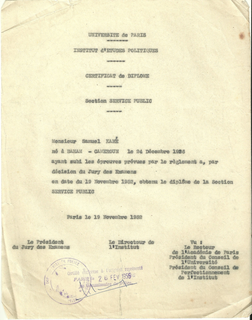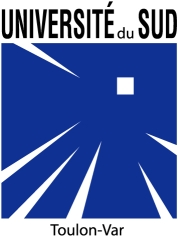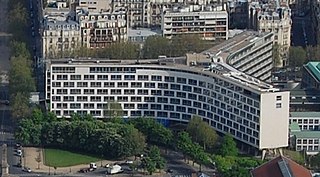| Nemopoda | |
|---|---|
 | |
| Nemopoda sp. | |
| Scientific classification | |
| Kingdom: | |
| Phylum: | |
| Class: | |
| Order: | |
| Section: | |
| Family: | |
| Subfamily: | |
| Genus: | Nemopoda Robineau-Desvoidy, 1830 [1] |
| Synonyms | |
Nemopoda is a genus of flies belonging to the family Sepsidae.
| Nemopoda | |
|---|---|
 | |
| Nemopoda sp. | |
| Scientific classification | |
| Kingdom: | |
| Phylum: | |
| Class: | |
| Order: | |
| Section: | |
| Family: | |
| Subfamily: | |
| Genus: | Nemopoda Robineau-Desvoidy, 1830 [1] |
| Synonyms | |
Nemopoda is a genus of flies belonging to the family Sepsidae.
Political science is the scientific study of politics. It is a social science dealing with systems of governance and power, and the analysis of political activities, political thought, political behavior, and associated constitutions and laws.

Genesis was a NASA sample-return probe that collected a sample of solar wind particles and returned them to Earth for analysis. It was the first NASA sample-return mission to return material since the Apollo program, and the first to return material from beyond the orbit of the Moon. Genesis was launched on August 8, 2001, and the sample return capsule crash-landed in Utah on September 8, 2004, after a design flaw prevented the deployment of its drogue parachute. The crash contaminated many of the sample collectors. Although most were damaged, some of the collectors were successfully recovered.

Homo is the genus that emerged in the genus Australopithecus that encompasses the extant species Homo sapiens, plus several extinct species classified as either ancestral to or closely related to modern humans, most notably Homo erectus and Homo neanderthalensis. The genus emerged with the appearance of Homo habilis just over 2 million years ago. Homo, together with the genus Paranthropus, is probably sister to Australopithecus africanus, which itself had previously split from the lineage of Pan, the chimpanzees.

The Paris Institute of Political Studies, commonly referred to as Sciences Po Paris or just Sciences Po, is a grande école and grand établissement located in Paris and other cities in France.

Calyampudi Radhakrishna Rao, FRS known as C. R. Rao is an Indian-American mathematician and statistician. He is currently professor emeritus at Pennsylvania State University and Research Professor at the University at Buffalo. Rao has been honoured by numerous colloquia, honorary degrees, and festschrifts and was awarded the US National Medal of Science in 2002. The American Statistical Association has described him as "a living legend whose work has influenced not just statistics, but has had far reaching implications for fields as varied as economics, genetics, anthropology, geology, national planning, demography, biometry, and medicine." The Times of India listed Rao as one of the top 10 Indian scientists of all time. Rao is also a Senior Policy and Statistics advisor for the Indian Heart Association non-profit focused on raising South Asian cardiovascular disease awareness.

The Cité des Sciences et de l'Industrie or simply CSI is the biggest science museum in Europe. Located in the Parc de la Villette in Paris, France, it is one of the three dozen French Cultural Centers of Science, Technology and Industry (CCSTI), promoting science and science culture.

Contemporary climate change includes both global warming and its impacts on Earth's weather patterns. There have been previous periods of climate change, but the current changes are distinctly rapid and are not due to natural causes. The main cause is the emission of greenhouse gases, mostly carbon dioxide and methane. Burning fossil fuels for energy use creates most of these emissions. Agriculture, steelmaking, cement production, and forest loss are additional sources. Temperature rise is also affected by climate feedbacks such as the loss of sunlight-reflecting snow cover, and the release of carbon dioxide from drought-stricken forests. Collectively, these amplify global warming.
The University of Picardy Jules Verne is a public university located in Amiens, France. It is under the Academy of Amiens. It was founded in 1969.
AgroParisTech is a French higher education institution, known as a grande école. It is a constituent member of the Paris-Saclay University. It was founded on January 1, 2007, by the merger of three life sciences grandes écoles.

The University of Toulon is a French university located in Toulon, France, and neighboring areas. It was founded in 1968 and is organized in 6 faculties, 2 autonomous institutes, an institute of business management and an engineering school.

UNESCO Headquarters, or Maison de l'UNESCO, is a building inaugurated on 3 November 1958 at number 7 Place de Fontenoy in Paris, France, to serve as the headquarters for the United Nations Educational, Scientific and Cultural Organization, (UNESCO). It is a building that can be visited freely.

In paleoanthropology, the recent African origin of modern humans, also called the "Out of Africa" theory (OOA), recent single-origin hypothesis (RSOH), replacement hypothesis, or recent African origin model (RAO), is the dominant model of the geographic origin and early migration of anatomically modern humans. It follows the early expansions of hominins out of Africa, accomplished by Homo erectus and then Homo neanderthalensis.

Neanderthals are an extinct species or subspecies of archaic humans who lived in Eurasia until about 40,000 years ago. They most likely went extinct due to assimilation into the modern human genome, great climatic change, disease, or a combination of these factors.
Ifri n'Amr Ou Moussa is an archaeological site discovered in 2005, located in the rural commune of Aït Siberne, Khémisset Province, in Western Morocco. This site has revealed burials associated with both Moroccan Early Neolithic and Bell Beaker culture.
Kehf el Baroud, sometimes mistakenly spelled Kelif el Boroud, is an archaeological site in Morocco. It is located to the south of Rabat, near Dar es Soltan.

Severe acute respiratory syndrome coronavirus 2 (SARS‑CoV‑2) is the coronavirus that causes COVID-19, the respiratory illness responsible for the ongoing COVID-19 pandemic. The virus previously had a provisional name, 2019 novel coronavirus (2019-nCoV), and has also been called human coronavirus 2019. First identified in the city of Wuhan, Hubei, China, the World Health Organization declared the outbreak a Public Health Emergency of International Concern on 30 January 2020, and a pandemic on 11 March 2020. SARS‑CoV‑2 is a positive-sense single-stranded RNA virus that is contagious in humans. As described by the US National Institutes of Health, it is the successor to SARS-CoV-1, the virus that caused the 2002–2004 SARS outbreak.

Coronavirus disease 2019 (COVID-19) is a contagious disease caused by severe acute respiratory syndrome coronavirus 2 (SARS-CoV-2). The first known case was identified in Wuhan, China, in December 2019. The disease has since spread worldwide, leading to an ongoing pandemic.

There are many variants of severe acute respiratory syndrome coronavirus 2 (SARS-CoV-2), the virus that causes coronavirus disease 2019 (COVID-19). Some are believed, or have been stated, to be of particular importance due to their potential for increased transmissibility, increased virulence, or reduced effectiveness of vaccines against them. These variants contribute to the continuation of the COVID-19 pandemic.

CY Tech, formerly EISTI, is a French graduate engineering school created in 1983.